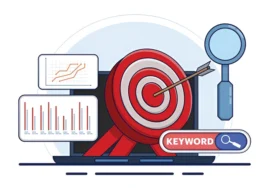
Mastering the Mayhem: Managing Photo Metadata and Keywords
Digital cameras are churning out photos at an alarming rate. While this explosion of creativity offers endless possibilities, it also creates a storage and organization nightmare. How do you find specific pictures of your child’s birthday party among the thousands of images? Enter the world of photo metadata and keywords–your key to unlocking a well-organized and searchable photo library.
This guide delves into the power of photo metadata and keywords, equipping you with the knowledge and strategies to tame your digital photo collection.
Demystifying Photo Metadata: The Power Behind the Pixels
Imagine each photo as a treasure chest. Tucked away inside are hidden details–the camera used, the date and time captured, and even the location if your camera has GPS enabled. This embedded information is known as photo metadata.
Here are the key types of metadata to be aware of:
- EXIF Data: This data comes straight from your camera and includes details like aperture, shutter speed, ISO, and focal length. Valuable for photographers to analyze their technical choices.
- IPTC Data: This standardized format allows embedding information like captions, keywords, and copyright details. Perfect for searching ability and protecting your work.
- XMP Data: This format, often used by editing software, stores information about edits made to the image. Useful for tracking your post-processing workflow.
While the metadata is generated by your camera, the actual power lies in customizing it with keywords.
Key-wording Your Photos: The Art of Searchable Organization
Keywords are the labels you assign to your photos, acting like tags that help you categorize and search for your collection. Think of them as the library catalog for your digital archive. Effective keywording requires a strategic approach:
- Specificity is key: Don’t settle for generic terms like “beach.” Get specific–”Hawaiian beach sunset with palm trees” paints a clearer picture.
- Be Descriptive: Capture the essence of the photo. Including details like objects, people, actions, and emotions.
- Embrace Hierarchy: Use joint broad and specific keywords. “Landscape” can be a parent term with child keywords like “mountain,” “forest,” or “desert.”
- Consistency is king: Develop a key-wording system that works for you and stick to it. This ensures search ability and reduces redundancy.
Here are the added tips for effective key wording:
- Use Presets: Create keyword lists for used themes or locations, saving you time and effort.
- Embrace Software: Many photo management applications offer keyword tools and suggest relevant keywords based on the image content.
- Don’t Overdo It: Aim for 5-10 relevant keywords per image. Too many can be counterproductive.
Bonus Tip: Leverage keyword hierarchies offered by the software. This allows you to categorize keywords like “Location > Asia > Japan > Tokyo.”
Tools of the Trade: Software Solutions for Mastering Metadata
While basic metadata editing is possible within your operating system, dedicated photo management software offers a wealth of features to streamline the process. Here are the popular options:
- Adobe Lightroom Classic: A comprehensive photo management solution with robust key-wording tools and hierarchical organization.
- Picasa: A free and user-friendly option from Google, offering basic keywording and editing functionalities.
- XnView MP: A free and powerful option for advanced users, offering extensive metadata editing capabilities.
Choosing the right software depends on your needs and budget. Research available options and consider features like keywording tools, batch editing, and cataloging functionalities.
Beyond the Basics: Advanced Techniques for Power Users
Once you’ve grasped the fundamentals, explore advanced techniques to further refine your photo organization:
- Controlled Vocabularies: Standardized keyword lists ensure consistency across your collection. Explore industry-specific vocabulary, like the Library of Congress Subject Headings, for even more precise organization.
- Keyword Synonym Management: Consider synonyms and related terms to expand ssearchability For example, include “birthday party” and “celebration” for photos of a birthday gathering.
- Negative Keywords: Exclude irrelevant keywords. For example, tagging a photo of a cat with “dog” would make it harder to find using the “dog” keyword.
Putting it All Together: A Workflow for Success
Following the steps outlined earlier, here’s a detailed workflow to streamline your photo metadata and keywording process:
1. Import Photos:
- When importing photos into your chosen software, take advantage of any automated features. Most software will capture basic metadata like date, time, and camera model automatically.
- If your camera has GPS enabled, ensure the location data is imported correctly. This can be crucial for searching for photos based on where they were taken.
- Consider renaming your files with a descriptive naming convention during import. This can be especially helpful if your camera assigns generic names. Use a format that includes the date, location, or a brief description (e.g., “2024-04-16_Family_Picnic_at_the_Park.jpg”).
2. Batch Edit:
- After importing, we utilize the power of batch editing to streamline keywording for groups of photos with similar themes.
- For example, if you imported a batch of photos from a recent vacation in Paris, you can add a common parent keyword like “Paris Vacation” to all photos.
3. Individualized keywording:
- This is where the real magic happens. Take the time to go through each photo and assign specific keywords that capture its essence.
- Remember the earlier tips on specificity, hierarchy, and consistency.
- Here’s a breakdown of the thought process for keywording an individual photo:
- Identify the main subject(s): Is it a portrait, a landscape, or an event?
- Capture the details: Are there any specific objects, people, or actions depicted?
- Consider the mood: Is it a joyful family gathering, a serene sunset, or a bustling city street?
- Utilize location: If the photo has location data, include relevant keywords for the place.
- Apply the chosen keywords to the photo, remembering to leverage keyword hierarchies if your software offers them.
4. Regular Review:
- Don’t expect your keyword strategy to be perfect from the start. Regularly review your collection and refine your approach as needed.
- Here are some tips for ongoing maintenance:
- Review Un-tagged Photos: Many software programs allow you to filter and view photos without keywords. Use this feature to identify photos that need attention.
- Consistency Check: Periodically evaluate your key wording consistency. Do you use the same terms for similar concepts?
- Embrace Learning: Stay updated on best practices for photo metadata and keywording. Explore online resources and photography forums to learn from other enthusiasts.
5. Leverage Automation (Optional):
- Some software offers automated keywording tools based on image recognition technology. These tools can help suggest relevant keywords, but they should not replace your judgment.
- Use automated keywording as a starting point, refining the suggestions with your specific terms.
By implementing this workflow and utilizing the suggested strategies, you’ll transform your photo collection from a chaotic mess to a well-organized and easily searchable library. The time invested in proper metadata and keywording will pay off handsomely, allowing you to effortlessly rediscover those cherished memories for years to come.





